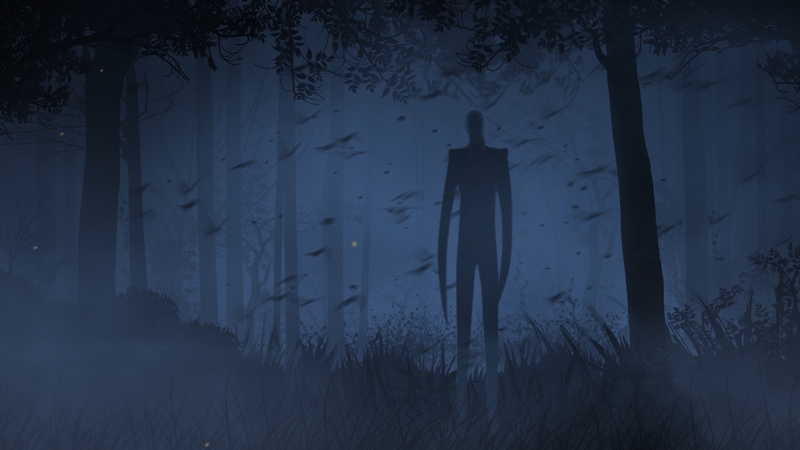Analysis: The creation and sharing of creepypastas like Slender Man and Eyeless Jack are inspired by folklore stories that have existed for centuries
The tales, traditions, and beliefs passed down through generations have long been an integral part of human culture. From ancient myths carved into stone tablets to oral traditions whispered around campfires, our folklore has served as a means of preserving collective wisdom, sharing cultural heritage, and understanding the mysteries of the world.
Across cultures and continents, folklore takes on diverse forms, encompassing myths, legends, fairy tales, folk songs, proverbs and rituals. These stories, often rooted in the experiences and values of a particular community, serve a multitude of functions – from teaching moral lessons and explaining natural phenomena to providing entertainment and fostering a sense of identity.
But despite its rich and enduring legacy, folklore is not static. It evolves with the times, adapting to new technologies, environments, and social contexts. Nowhere is this evolution more evident than in the virtual corridors of cyberspace where folklore has transcended its traditional boundaries, migrating from the oral tradition to the vast expanse of the internet.
We need your consent to load this rte-player contentWe use rte-player to manage extra content that can set cookies on your device and collect data about your activity. Please review their details and accept them to load the content.Manage Preferences
From RTÉ Radio 1's Ray D'Arcy Show, Michael Fortune on the folklore traditions associated with May in Ireland
Digital folklore incorporates a wide array of phenomena, including online urban legends, viral memes, internet challenges and virtual rituals. These digital artifacts, which are shared and reshared at often a very rapid rate across social media platforms, forums, and websites, shape our collective imagination and reflect the hopes, fears, and anxieties of the internet age. Just as traditional folklore reflects the values and concerns of its time, digital folklore serves as a mirror to our contemporary culture, offering insights into our relationship with technology, the changing nature of storytelling, and the ways in which we navigate the complexities of the digital world.
'Creepypasta' has become synonymous with digital folklore and digital storytelling. One might be forgiven for thinking that creepypasta refers to a children's tin of tomato flavoured pasta that comes in creepy shapes, but the truth is much more fascinating. The term first appeared on the 4chan imageboard around 2007. The word is a variant of copypasta (from "copy and paste"), another 4chan term that refers to blocks of text that become viral by being copied widely around the internet.
Unlike copypastas, creepypastas are all horror fiction that are shared and circulated online, often through forums, social media and dedicated websites. These stories typically feature eerie or unsettling themes, ranging from supernatural encounters to psychological horror, and they often incorporate elements of urban legends, folklore and paranormal phenomena.
We need your consent to load this rte-player contentWe use rte-player to manage extra content that can set cookies on your device and collect data about your activity. Please review their details and accept them to load the content.Manage Preferences
From RTÉ Lyric FM's Culture File, Darryl Jones on the decline of cinematic horror and the rise of transmedia storytelling via the Slender Man meme
The most famous of these may be The Slender Man, a creepypasta that originated on an internet forum in 2009. It tells the story of a tall, thin figure with a featureless face who stalks and abducts children. This eerie tale quickly gained traction online, inspiring fan art, videos, and even real-life incidents. Some individuals even claim to have encountered the Slender Man: a tragic incident unfolded in 2014 in Wisconsin, United States, when two 12-year-old girls lured a classmate into the woods and stabbed her multiple times citing the Slenderman legend as the motivation for the attack.
Despite its fictional origins, The Slender Man has become a prominent figure in internet culture, showcasing how digital folklore can blur the lines between fiction and reality in the online world. While the Slender Man itself is a creation of the digital age, it draws inspiration from various folklore and urban legend tropes that have existed for centuries.
The idea of a tall, shadowy figure haunting the woods or lurking in the darkness is reminiscent of archetypal figures found in folklore from different cultures around the world. The concept of a malevolent entity preying on children is a recurring motif in folklore and fairy tales. So while The Slender Man is a product of the digital age, its roots can be traced back to elements of traditional folklore and urban legends that have permeated human culture for generations. This blending of old and new is characteristic of digital folklore, where traditional themes are reimagined and reshaped in the context of the internet age.
We need your consent to load this YouTube contentWe use YouTube to manage extra content that can set cookies on your device and collect data about your activity. Please review their details and accept them to load the content.Manage Preferences
From Jordan Persegati, the origin story of Eyeless Jack and how he became a monster
Another popular creepypasta is the legend of Eyeless Jack. The legend centres around a mysterious figure with hollow eye sockets and a craving for human organs. According to the legend, Eyeless Jack is said to stalk and prey upon unsuspecting victims, usually appearing in the dark of night or in isolated areas. Eyeless Jack embodies primal fears and anxieties, tapping into our deepest fears of the unknown, the grotesque, and the inexplicable.
Those of us who enjoy a scary campfire story in the traditional sense will know that the image of a malevolent hooded character is a common trope in traditional folklore. Both the Grim Reaper and the Devil are all described as appearing in a hooded cloak.
Perhaps the most striking character that Eyeless Jack resembles is the universal figure of the bogeyman commonly depicted as a hooded figure in most cultures. This was most famously depicted by painter Francisco Goya in his 1797-1799 collection of etchings placed on paper where he depicts a mother dressed as "El Coco" or the bogeyman frightening her children. Whether real or imagined, the legend of Eyeless Jack continues to haunt the digital corridors of the internet, leaving a lasting impression on those who dare to delve into the realm of online digital folklore in the horror genre.
We need your consent to load this rte-player contentWe use rte-player to manage extra content that can set cookies on your device and collect data about your activity. Please review their details and accept them to load the content.Manage Preferences
From RTÉ Brainstorm, the superstitions and mysteries around Ireland's 'fairy forts'
Even if horror isn't your cup of tea, digital folklore still surrounds you. Most of us engage in the use of social media to keep in touch with friends and family and boast about our new cars. However, social media is a hive of digital folklore and the fears and anxieties we share around the rapidly changing and intelligent technology that is available to us, fuels the sharing of digital folklore.
The practice of copying and sharing posts on Facebook for privacy protection is a good example of digital folklore that reflects our fears and anxieties about online privacy. These posts typically contain a message instructing users to copy and paste the text into their status updates to prevent Facebook from using their content, photos, or personal information for commercial purposes or without their consent.
If you thought folklore was confined to old tales and piseogs, think again
While these posts may be well-intentioned, they are often based on misconceptions or misinformation about Facebook's privacy policies and terms of service. In reality, copying and sharing these messages does not provide any additional privacy protection or legal rights to users' content. Facebook's terms of service govern how users' information and content are used on the platform, and simply posting a status update does not alter those terms.
So if you thought folklore was confined to old tales and piseogs, think again. In our rapidly changing world, we have evolved and adapted to new and exciting modes of communication, and so too has our folklore. From the haunting legends of Slender Man and Eyeless Jack to the copy and paste messages that populate our social media profiles, folklore continues to thrive, reflecting our deepest fears, anxieties, and aspirations in the ever-evolving fabric of human culture.
Follow RTÉ Brainstorm on WhatsApp and Instagram for more stories and updates
The views expressed here are those of the author and do not represent or reflect the views of RTÉ


